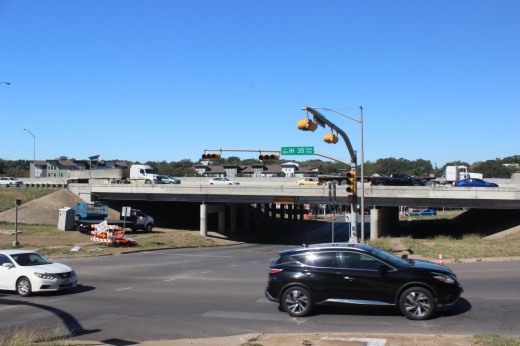In response, TxDOT officials called the move “disappointing” and said delaying the project would be fiscally irresponsible as construction costs continue to rise.
The project could break ground as early as next spring.
The why
Council members were urging TxDOT to delay construction following a closer look at the Environmental Impact Statement TxDOT released in late August.
The EIS states the project could emit 50,000 metric tons of greenhouse gas emissions per year for the next 20 years. That’s similar to adding 5,000 Ford 150s to I-35’s fleet that didn’t exist before, said Kara Kockelman, and engineering professor at The University of Texas, said in an email to Community Impact.
Mayor Pro Tem Paige Ellis, who authored the resolution, said TxDOT’s greenhouse gas emissions projection could be an underestimate, and going through with the project without further analysis would be a mistake as Austin continues to see the effects of climate change.
Council Member Alison Alter questioned why the EIS also did not include the air quality impacts of the cap and stitch projects.
“This is too important not to get right,” she said.
The resolution passed 7-3, with council members Mackenzie Kelly and Lesie Pool as well as Mayor Kirk Watson voting against it.
The Travis County commissioners share similar concerns. In late September, the court approved sending a letter to TxDOT outlining their issues about the project’s greenhouse gas emissions and the thoroughness of the EIS.
“They've graded their own paper and given themselves an A,” Travis County Commissioner Brigid Shea said. “And it’s just not acceptable.”
What they’re saying
“This is a long overdue project designed with the community and for the community,” TxDOT Austin District Engineer Tucker Ferguson said in a news release. “Today’s resolution to delay by the Austin City Council is not indicative of the partnership TxDOT has cultivated with the city.”
The context
Without federal intervention, it’s unlikely that any resolution put forth by city or county leaders will stop the project, Council Member Chito Vela said.
“The project is moving forward, and I'm not aware of any legal or political strategy that will stop it,” Vela said.
While the reality of the project sinks in, council members are working to identify funding sources for the $700 million required for its cap and stitch project before their December 2024 deadline.
“We must do everything we can to avoid the worst case scenario of an uncapped highway—a trench—that would even further divide East and West Austin with all the loud noise, light and air pollution that comes with it,” Vela said.
The city already applied for a $105 million grant that would fund a 5.3-acre deck over the highway from East Cesar Chavez to Fourth streets, and they are working on finding funding for more caps and stitches in North and South Central portions of the highway.
The details
The approved resolution would have requested two environmental plans to be finished before TxDOT breaks ground on the I-35 project.
The first study is the Capital Area Metropolitan Planning Organization Regional Mobile Emission Reduction Plan. The plan is funded by the Federal Highway Administration Carbon Reduction Program and focuses on greenhouse gas emissions and air quality impacts of regional roadways.
The second study—the Austin Metropolitan Statistical Area Climate Plan—is a team effort among Austin as well as Travis, Hays and Bastrop counties. The plan is funded by the Environmental Protection Agency Climate Pollution Reduction Grant and will look into how to reduce greenhouse gas emissions throughout the region.





